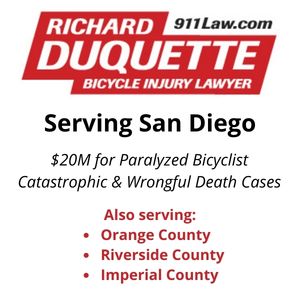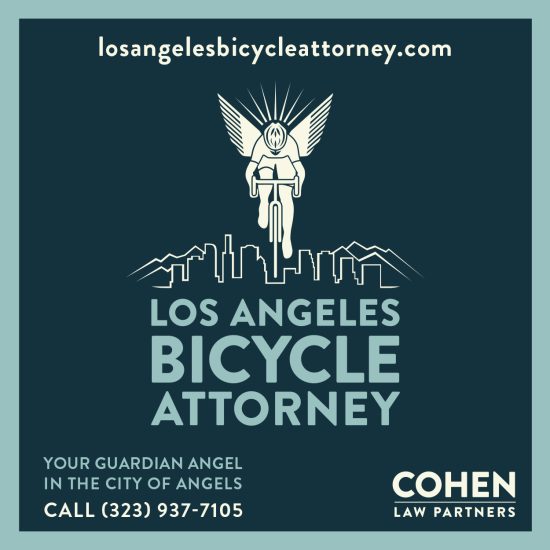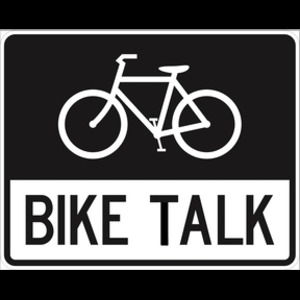Earlier this month, we remembered the people behind the statistics, the victims of cycling collisions on Southern California streets.
Now lets take a look at the numbers. And some of the surprising findings those statistics reveal — including some that suggest Los Angeles could be your safest place to ride. And that the door zone may be a hell of a lot safer than we all think.
But first, a couple of big important disclaimers.
These stats are based strictly on the fatalities that I am aware of, whether they have been reported in the press or have come to my attention in other ways. It is entirely possible that there were other bicycling-related deaths that I don’t know about.
These numbers also do not include non-fatal collisions. It’s possible that any given area could have had a high rate of injury collisions while having few or no fatalities. Or that one risk factor may result in a high rate of fatalities but few injuries — or the other way around.
The limited data I have to work with simply doesn’t show that.
Nor does it suggest why one area may appear to be more dangerous than another, even though I may make a guess at it.
And with that, let’s get on with it.
By my count, 71 cyclists were killed in traffic-related collisions in Southern California last year. That does not include another nine riders who were fatally shot — eight in Los Angeles County and one in San Diego.
Those 71 fatalities represent a dramatic increase over most recent years on record, with 55 cyclists killed in both 2008 and 2009. In addition, it’s slightly more than the five-year average from 2005 to 2009, at just over 68 traffic-relating cycling fatalities per year.
It also marks a return to the roadway carnage of 2005 and 2006, when 76 and 89 riders were killed, respectively.
Fatalities by county: 2011 2009* 2006** Ave. 2005 – 2009
Los Angeles 24 22 24 24.2
Orange 13 11 21 13
San Diego 12 8 5 8
Riverside 11 7 14 10
San Bernardino 6 4 11 7.4
Ventura 4 2 11 4.6
Santa Barbara*** 1 1 3 1.8
Imperial 0 1 0 .4
As you can see, Los Angeles County has remained remarkably steady despite a dramatic increase in ridership, with an average of two riders killed per month. At the same time, while Orange County has dropped significantly from the horrors of 2006, it continues to reflect an average of more than one cyclist killed every month.
Meanwhile, San Diego, San Bernardino and Ventura Counties all showed a 50% increase over 2009, though both Ventura and San Bernardino were still below their five-year averages.
At first glance, it would appear that Los Angeles County is by far the most dangerous place to ride in Southern California. However, L.A. is also the most populous of the eight counties included in this count.
Ranking the counties in terms of risk of death per capita reveals some surprises, with the eight counties ranked from worst to best:
County Population Rate of death
Riverside 2,100,516 1 death per 190,956 population
Ventura 797,740 1 per 199,435
Orange 3,010,759 1 per 231,597
San Diego 3,001,072 1 per 250,089
San Bernardino 2,015,355 1 per 335,893
Santa Barbara*** 405,396 1 per 405,396
Los Angeles 9,862,049 1 per 410,919
Imperial 174,528 0 per 174,528
Unfortunately, there’s no objective measure of how many people ride bikes in each county. But surprisingly, these stats suggest that heavily congested L.A. County may actually be twice as safe as other heavily populated counties.
Those fatalities occurred in 53 cities and unincorporated areas throughout the region, with eight cities suffering more than one fatality last year:
San Diego 7
Los Angeles 5
Long Beach 4
Garden Grove 2
Redondo Beach 2
Pasadena 2
Riverside 2
Oceanside 2
Again, using the measurement of deaths per population reveals some very surprising results:
City Population Rate of death
Redondo Beach 66,748 1 per 33,374
Pasadena 137,122 1 per 68,562
Oceanside 167,086 1 per 83,543
Garden Grove 170,883 1 per 85,441
Long Beach 462,257 1 per 115,564
Riverside 303,871 1 per 151,936
San Diego 1,301,617 1 per 185,945
Los Angeles 3,792,621 1 per 758,524
While multiple deaths in smaller cities may raise a red flag, they don’t really tell us much. Two deaths apiece in each in the first four cities could be a statistical fluke; just one more in any of the other 45 cities not listed here, and they could have made this list, as well.
It’s also worth noting that some of these cities, such as Oceanside and Redondo Beach, are destination areas for cyclists, with a level of weekend ridership that can far exceed their relatively small populations as cyclists pass through from other areas.
More interesting is the fact that the City of Angels, with it’s long-held reputation for car culture, bad streets and open hostility to cyclists, has significantly fewer fatalities per capita than Riverside and San Diego. Combined.
And at least in terms of fatalities, Los Angeles is over six times safer than bike-friendly Long Beach.
That could reflect any number of factors, from the possibility of better trauma care and emergency response times in L.A., to more dangerous streets in Long Beach — including Los Coyotes and PCH — that have yet to see the improvements that have made biking safer in other areas of the city.
But it’s shocking to think that you may actually be safer riding your bike in bike-unfriendly L.A. than the streets of the self-proclaimed most bicycle friendly city in America.
Then again, the real shocker is that L.A. could a hell of a lot safer than most of us thought.
Myself included.
Now let’s look at some equally surprising stats on how these collisions occurred.
Again, bear in mind that most of this information has been gleaned from media reports; in some cases, they offer a detailed analysis of the collision, and in others, barely mention anything more than the fact that it occurred.
We’ll start with the question of who was at fault.
- Driver: 32
- Cyclist: 28****
- Unknown or both: 11
This is my own analysis of the collision, based on the limited information I have; it does not necessarily reflect how the police, sheriff’s or CHP may have assigned fault.
Especially since many investigative officers tend to be poorly trained in bike collision analysis and investigation, and often appear to be biased in favor of the motorist.
In the absence of any information to the contrary, I assigned hit-and-runs to the fault of the driver, on the assumption that an innocent person has little motive to flee — while recognizing that is not always true.
I have also assigned fault for solo collisions and riders hit by trains to the cyclist. Even though it’s possible that other factors, such as near misses by motorists or poor road conditions, may have contributed to the death in some way.
These numbers also err on the low side, reflecting only the information I have been able to document; in many cases, there was not enough information to make a determination.
And there may be multiple factors involved in any given collision, so these won’t add up to a total of 71.
So let’s look at some of the other numbers.
- At least 25 riders were hit from behind — by far the leading cause of cycling fatalities in 2010
- At least 13 were hit-and-runs
- At least 12 were hit at intersections or driveways
- At least 10 involved drugs or alcohol — and not always on the part of the driver
- At least eight were hit while riding on or leaving a sidewalk
- At least seven were hit head-on, usually while riding on the wrong side of the street
- Seven were solo collisions
- Seven victims were over the age of 70
- At least six were killed after running stop signs
- At least six were killed while riding in a marked bike lane or off-road bike path
- At least six were killed in right hook collisions
- Six 12 years old or younger
- Another five were between the ages of 15 and 17
- At least four weren’t using lights after dark
- Three were killed by trains
- Three were killed by out of control vehicles
- At least two were killed by drivers running red lights or stop signs
- At least two were killed distracted drivers
- At least one was killed in a left cross
- One was killed by a truck backing into a loading bay
- One was killed, at least in part, due to poorly designed infrastructure
- And just one was killed as a result of a dooring
Stop and think about that.
For decades, we’ve been taught that the door zone is one of the most dangerous places to ride; vehicular cyclists often refer to it as the death zone.
Yet these stats show just the opposite. You are far more likely to be killed in a hit-from-behind collision or at an intersection than you are by getting doored. And yet, the solution we’re invariably taught is to ride in the traffic lane, directly in front of traffic coming up from behind.
Maybe that’s because so many cyclists are heeding that advice and avoiding the door zone, while placing themselves at greater risk of getting hit from behind. Or maybe because hit-from-behind collisions tend to occur at higher speeds, reducing survivability, while doorings tend to be relatively slow speed collisions that are more likely to result in injury than death — especially if the rider is wearing a helmet to protect from head injuries in a fall.
And that’s not to say that riding in the door zone is safe. But it may be far less deadly than we have been lead to believe.
Of course, that’s not the only conclusion that jumps out from these numbers.
Like far too many drivers are willing to flee the scene, leaving their victims to die in the street. Too many cyclists run stop signs — especially when other vehicles are present.
Sidewalks remain dangerous places for cyclists, particularly where they intersect with streets and driveways.
Riders can lower their risk simply by riding on the right side of the road and using lights after dark. And staying of the roads after drinking or using drugs.
Ditto for stopping for trains; once the warning signals chime and the gates drop, stay the hell off the tracks. And that goes for drivers trying to beat a train, as well.
Bike lanes are no guarantee of safety. Yet there were fewer cyclists killed in bike lanes than on sidewalks and crosswalks, and far fewer than on streets without them. But that may just speak to the scarcity of bike lanes in most of Southern California.
Then there’s the single most glaring conclusion we can make from these fatalities.
Too many people have died, and continue to die, on our streets.
One is one too many; 71 is an obscenity.
And it’s clearly headed in the wrong direction.
Update: in response to one of the comments to this post, I’ve added information on how many of the victims were under 18; six riders were 12 or under when they were killed, while another five were aged 15 to 17. In addition, seven of the victims were over the age of 70.
……..
*Most recent year currently on record
**Worst of the five years on record
***I will drop Santa Barbara County from this count next year, to reflect the 7-county area included in the Southern California Council of Governments (SCAG)
****Includes solo collisions and collisions with trains
Like this:
Like Loading...








